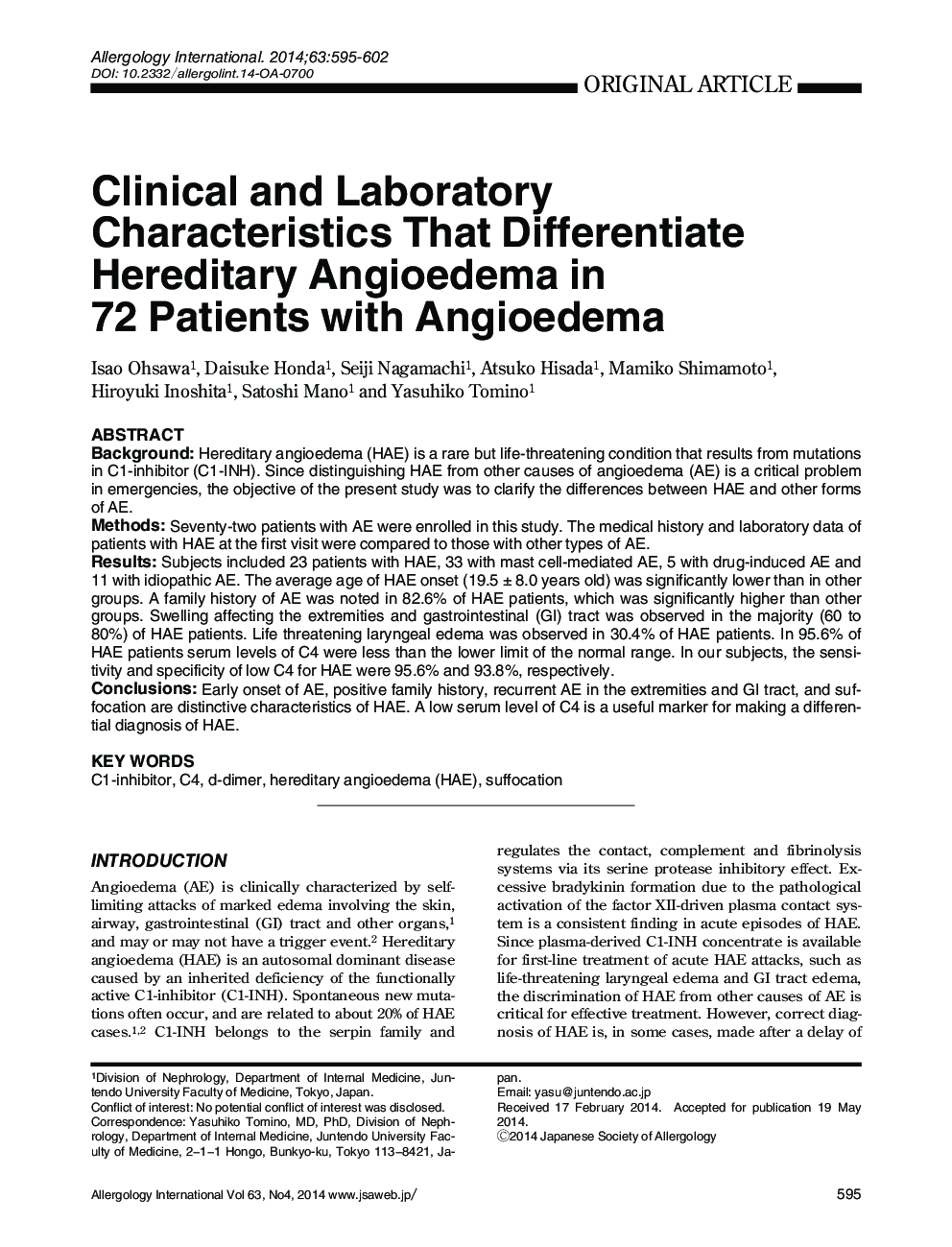| کد مقاله | کد نشریه | سال انتشار | مقاله انگلیسی | نسخه تمام متن |
|---|---|---|---|---|
| 3340611 | 1214063 | 2014 | 8 صفحه PDF | دانلود رایگان |
ABSTRACTBackgroundHereditary angioedema (HAE) is a rare but life-threatening condition that results from mutations in C1-inhibitor (C1-INH). Since distinguishing HAE from other causes of angioedema (AE) is a critical problem in emergencies, the objective of the present study was to clarify the differences between HAE and other forms of AE.MethodsSeventy-two patients with AE were enrolled in this study. The medical history and laboratory data of patients with HAE at the first visit were compared to those with other types of AE.ResultsSubjects included 23 patients with HAE, 33 with mast cell-mediated AE, 5 with drug-induced AE and 11 with idiopathic AE. The average age of HAE onset (19.5 ± 8.0 years old) was significantly lower than in other groups. A family history of AE was noted in 82.6% of HAE patients, which was significantly higher than other groups. Swelling affecting the extremities and gastrointestinal (GI) tract was observed in the majority (60 to 80%) of HAE patients. Life threatening laryngeal edema was observed in 30.4% of HAE patients. In 95.6% of HAE patients serum levels of C4 were less than the lower limit of the normal range. In our subjects, the sensitivity and specificity of low C4 for HAE were 95.6% and 93.8%, respectively.ConclusionsEarly onset of AE, positive family history, recurrent AE in the extremities and GI tract, and suffocation are distinctive characteristics of HAE. A low serum level of C4 is a useful marker for making a differential diagnosis of HAE.
Journal: Allergology International - Volume 63, Issue 4, 2014, Pages 595-602
